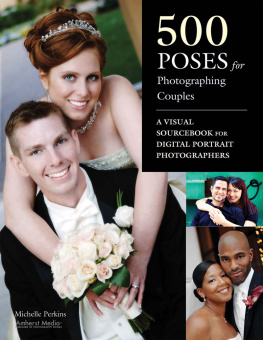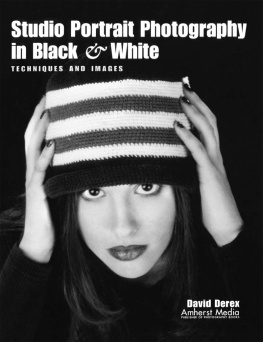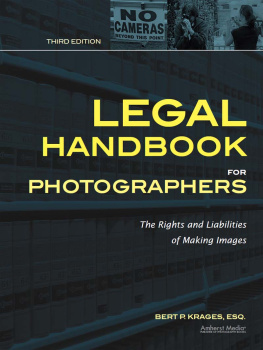Copyright 2005 by Norman Phillips and Christopher S. Nudo, Esq.
All rights reserved.
Printed in Korea.
10 9 8 7 6 5 4 3 2 1
No part of this publication may be reproduced, stored, or transmitted in any form or by any means, electronic, mechanical, photocopied, recorded or otherwise, without prior written consent from the publisher.
Notice of Disclaimer: The information contained in this book is based on the authors experience and opinions. The author and publisher will not be held liable for the use or misuse of the information in this book.
DISCLAIMER
T he contracts and agreements that we have drafted for this book are drafted with the State of Illinois law as our jurisdiction. We recommend that you seek counsel from a lawyer where you transact business to ensure that our contracts and agreements conform to your state law and any local ordinances that may apply. Further, I do not hold myself out, nor do I represent that I have any authority to practice law outside of the State of Illinois. Nothing in this book should be construed as my attempt to practice law outside of my licensed jurisdiction and thus be interpreted as the unauthorized practice of law.
No attorney-client relationship can be construed due to your use of these agreements and contracts and no claim can be asserted against the authors of this book based upon a loss or a claim that you have suffered or may suffer in the future. This book is merely a reference to assist you in protecting your rights as a photographer.
This book is a tool, and as with any good tool it works most efficiently when it is used in its proper context. With the majority of the work done for you, you still have the responsibility to use these contracts and agreements in their proper context. An agreement or contract that is used in an inappropriate manner is no better (and at times worse) than using no agreement or contract at all.
Finally, no matter how skillfully an agreement or contract is drafted, it does not protect a party from misrepresentation or fraud. All of these agreements and contracts assume that both parties are dealing in good faith and with the full intention to agree with one another.
We hope that you enjoy our book and, more importantly, that you use it to enhance your business.
Christopher S. Nudo, Attorney at Law
TABLE OF CONTENTS
FOREWORD
T he legal relationship between professional photographers and their clients has forever been an area of serious neglect. Those who have ventured into professional photography have been drawn in by the magic of creating images with a press of a button. However, few have the business foresight to appreciate that they are offering a service that may, in many cases (especially wedding, bar mitzvah, and other once-in-a-lifetime special events), result in situations that can be contentious and potentially litigious. We operate in a legal system that encourages frivolous suits that can result in ruinous expenses to defend.
There are no definitive statistics to indicate how many professional photographers employ a contract between themselves and their clients. What we do know is that very few use contracts that offer even a modicum of protection against potential lawsuits. The well-published form contracts on the market are nothing more than an acknowledgment of a deposit toward a vaguely described service to be provided. Remarkably, in an era in which unscrupulous lawyers will encourage a lawsuit at the drop of a hat, members of the public will sign such a contract that offers them no more protection than it offers the photographer.
This book has come about because I have always been something of an amateur student of the law. In my own business, I have endeavored to be correct in my language when writing releases, contracts, estimates, quotes, etc. From time to time I have also requested my attorney, Christopher S. Nudo, to review these documents. When doing so in 2001, he went well beyond a review. He thoroughly researched many other contracts, including those recommended by leading professional photographers associations. He also researched books on legal issues in professional photography. What he discovered was that most of them were not worth the paper they were printed on and that some had serious flaws. He suggested that, other than my own contract, there was not one that he could recommend. Even so, we added several elements to make it more appropriate for the modern era.
As a result of this research, we discussed numerous aspects of the law. We quickly realized that there is an enormous potential for legal problems in photography and that there was inadequate advice availableso we collaborated in this book.
Wedding and Portrait Photographers Legal Handbook covers a wide area of protection for the photographer, as well as offering the degree of warranty for the client that must be seen as fair and reasonable. If you are a professional photographer, you will learn about situations that you might have been confronted with previously or that you may be confronted with in the futureand youll discover how you can protect yourself. Many of the issues addressed here apply to both studio operations and also to freelance photographers who offer their services to the public or to studios seeking assistance.
I hope that this book will give you the tools and advice you need to create a thriving professional photography business without threat of legal suit.
Norman Phillips
INTRODUCTION
T raditionally, photographers have been free spirits. As a result, many take assignments without a thought as to their obligations or to their clients obligations to them. But be aware: we live in a litigious society and there are those who, at the drop of a hat, are prepared to take you to court. Because it often costs less than litigation, most cases are settled out of courteven when the defendant has an adequate defense. Still, legal suits are costly and often times even crippling.
Unlike going into a store and purchasing an item from the shelf where the terms of business are well established and consumer-protection laws apply, accepting an assignment or commission to produce images for a specific or general purpose has very different connotations. This is especially true if the job is time- or location-restricted, such as a wedding, bar mitzvah, or any other event that cannot be restaged (or where restaging would involve great expense). Equally, a family commissioning a portrait at Thanksgiving when members are coming to town from far and wide might consider negligence or carelessness an issue worthy of legal recourse. Even a family of three or four who invest in time at the beauty parlor and the purchase of coordinating attire for a once-a-year portrait session could be encouraged to seek redress should the photographer not live up to the clients expectations. Apart from the potential for litigation there is also the need to ensure that there are no misunderstandings between the client and the photographer.
TO DOWNLOAD CONTRACTS
All of the forms and contracts described in the following chapters are available as a free download from the publishers website. Just go to www.AmherstMedia.com/down-loads.htm, click on the title of this book, and enter the password PN1796. If you feel the need to modify the language of these contracts, we recommend that you refer to your state laws, since they may differ with those of Illinois, the state laws to which the recommended documents have been applied. Each state may have laws that make certain paragraphs in our documents either limited or unusable. However, the recommended documents are generally a sound and reliable foundation.













